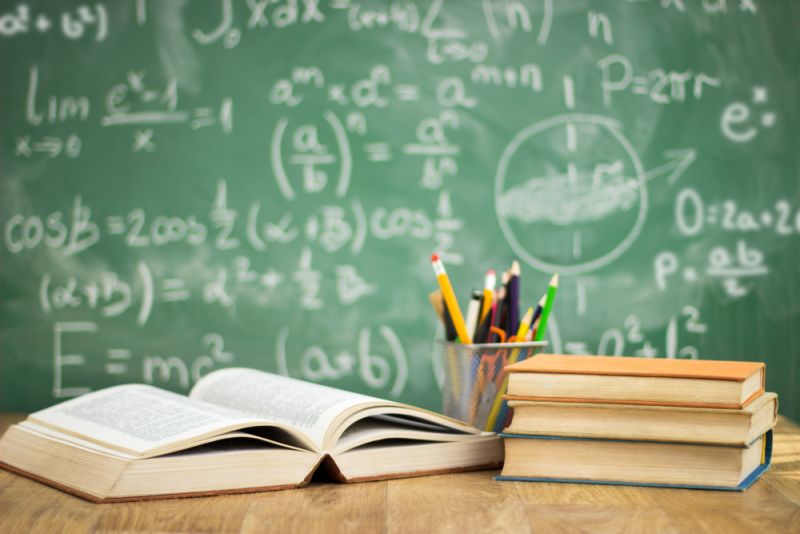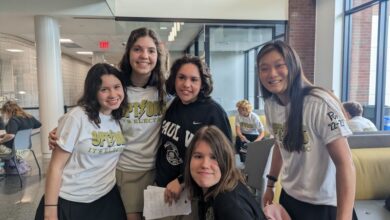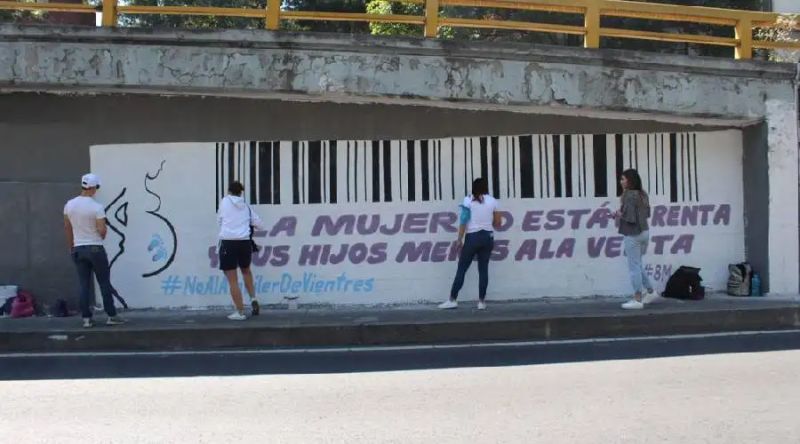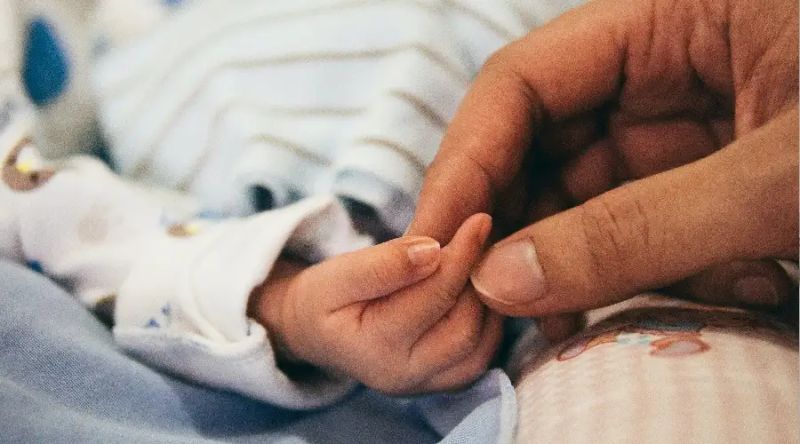Remembering Pope Benedict XVI’s visit to the United States
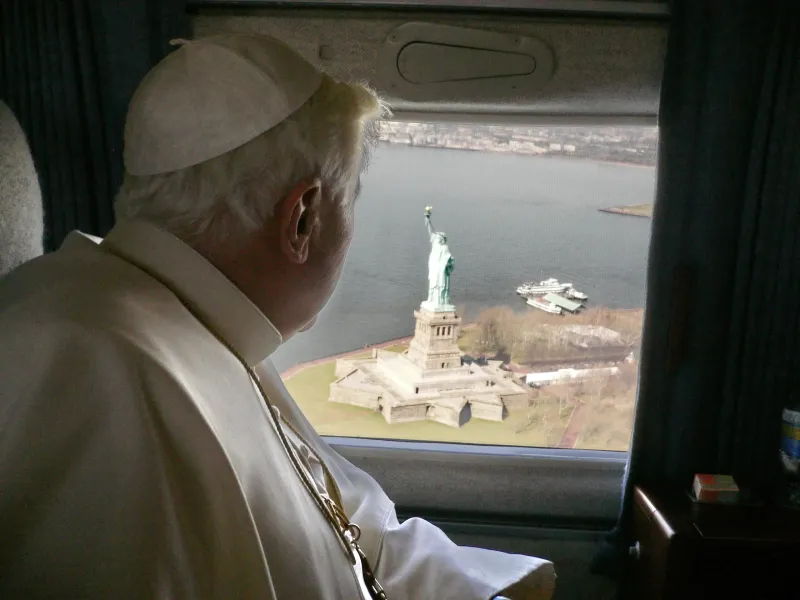
 Pope Benedict XVI sees the Statue of Liberty from the air during his only visit to the United States April 15–20, 2008. / Vatican Media
Pope Benedict XVI sees the Statue of Liberty from the air during his only visit to the United States April 15–20, 2008. / Vatican Media St. Louis, Mo., Jan 2, 2023 / 10:00 am (CNA).
Pope Benedict XVI, who died Saturday, visited the United States only once, but he left a lasting impression.
The spring 2008 trip included a Mass celebrated at the then brand-new Washington Nationals baseball stadium, a solemn prayer service at Lower Manhattan’s Ground Zero, and an address to the United Nations.
Amid some commentators’ worries that the pope would use the visit to “scold” America, Benedict did not mince words during his trip, but nevertheless he endeared himself to the American public. A May 2008 survey from the Pew Research Center found that more Americans had a “favorable opinion” of the pope following his visit than they had before.
Benedict arrived in the U.S. on April 15, 2008, landing at Andrews Air Force Base near Washington, D.C. President George W. Bush greeted the pontiff on the tarmac — a notable detail, since presidents generally waited for foreign dignitaries to arrive at the White House.
Bush said in an interview with EWTN ahead of the meeting that he agreed with the pope’s observations about moral relativism, saying that it “undermines the capacity to have hopeful and free societies.”
The next day, which happened to be Benedict’s 81st birthday, the president welcomed the pope to the White House. In his opening remarks, Bush highlighted the religious roots of the United States and the values of defending life and religious freedom, telling the pope that the U.S. needs his encouragement in fostering these values.
The pope responded by expressing his pleasure to be present in the United States as a guest, indicated his “great respect for this pluralistic society,” and expressed hope that he would be able to meet with religious leaders of a wide range of traditions.
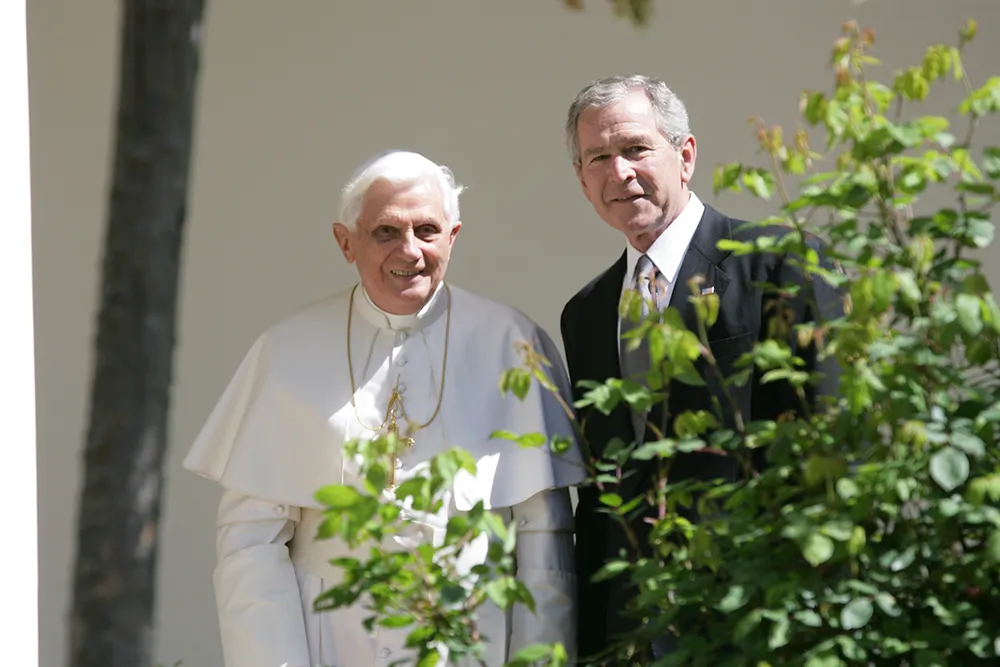
The ongoing sexual abuse crisis, spurred by numerous revelations of abuse in the U.S. in 2002, loomed large over the pope’s visit, and Benedict did not shy away from discussing it openly. Addressing the bishops of the United States later that day, April 16, the pope said the sexual abuse scandal had been “very badly handled” and said they must reach out with love and compassion to victims.
He later met with a half-dozen sexual abuse victims in the chapel of the papal embassy, telling the survivors he would pray for them, their families, and all victims of clergy sex abuse.
He also addressed the topic during his homily at Mass at Nationals Park in Washington, D.C., on April 17, which attracted some 46,000 attendees.
“I acknowledge the pain which the Church in America has experienced as a result of the sexual abuse of minors,” Benedict said during the homily.
“No words of mine could describe the pain and harm inflicted by such abuse. It is important that those who have suffered be given loving pastoral attention. Nor can I adequately describe the damage that has occurred within the community of the Church. Great efforts have already been made to deal honestly and fairly with this tragic situation and to ensure that children — whom our Lord loves so deeply, and who are our greatest treasure — can grow up in a safe environment. These efforts to protect children must continue. … Today I encourage each of you to do what you can to foster healing and reconciliation, and to assist those who have been hurt.”
Explaining his purpose of his trip, he said: “I have come to repeat the Apostle’s urgent call to conversion and the forgiveness of sins, and to implore from the Lord a new outpouring of the Holy Spirit upon the Church in this country.”
In closing, the pope returned to his call for a renewal of the Church in America, saying that it “depends on the renewal of the practice of Penance and the growth in holiness which that sacrament both inspires and accomplishes.”
Later that day, Benedict addressed the heads of more than 200 U.S. Catholic colleges and universities and 195 Catholic dioceses’ superintendents at The Catholic University of America on the topic of Catholic identity in education.
The pope told the educators: “A university or school’s Catholic identity is not simply a question of the number of Catholic students. It is a question of conviction — do we really believe that only in the mystery of the Word made flesh does the mystery of man truly become clear? Are we ready to commit our entire self — intellect and will, mind and heart — to God? Do we accept the truth Christ reveals? Is the faith tangible in our universities and schools? Is it given fervent expression liturgically, sacramentally, through prayer, acts of charity, a concern for justice, and respect for God’s creation?”
“Only in this way do we really bear witness to the meaning of who we are and what we uphold,” he said.
He also met with representatives of other religions, including Jewish leaders.
The pope said in his address: “The task of upholding religious freedom is never completed. New situations and challenges invite citizens and leaders to reflect on how their decisions respect this basic human right. Protecting religious freedom within the rule of law does not guarantee that peoples — particularly minorities — will be spared from unjust forms of discrimination and prejudice. This requires constant effort on the part of all members of society to ensure that citizens are afforded the opportunity to worship peaceably and to pass on their religious heritage to their children.”
Benedict then left the U.S. capital and headed to the country’s largest metropolis, New York City. After a warm welcome at John F. Kennedy International Airport, the pope headed to Manhattan to address the United Nations.
That year, 2008, marked the 60th anniversary of the Universal Declaration of Human Rights, and the pope said in his speech that human rights are inherent to human persons and not the fruit of an “agreement.” These rights, therefore, cannot be manipulated by ideological and pressure groups.
On April 20, the last day of his visit, Benedict visited Ground Zero, the memorial site of the World Trade Center towers. Sixteen family members, four first responders, and four survivors were present — and later met with the pope — as the Holy Father descended the ramp down into the pit where the Twin Towers once stood, knelt, and silently prayed.
After lighting a candle, the Holy Father offered a prayer for the victims, their families, and those who survived all three attacks on 9/11. He then blessed Ground Zero and the people present with holy water.
Later that day, some 60,000 people attended Mass with the pope at Yankee Stadium in New York. The pope said in his homily that true freedom is found in self-surrender and turning away from sin. The Mass also served to celebrate the 200th anniversary of the creation of the Dioceses of New York, Boston, Philadelphia, and Louisville from the mother Diocese of Baltimore, which itself was elevated to an archdiocese in 1808.
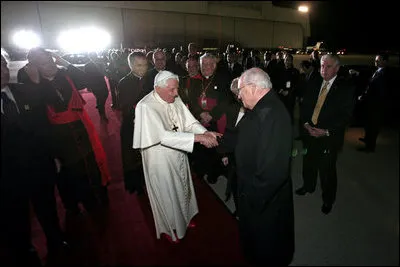
The pope then departed the United States, again from Kennedy International Airport. It remains his only visit to the United States; the next pope to visit the U.S. would be Pope Francis in 2015.


